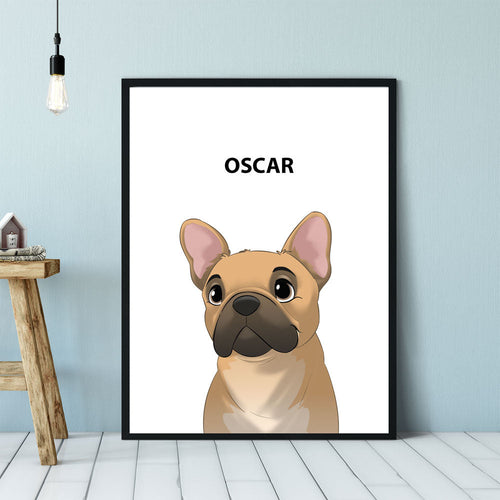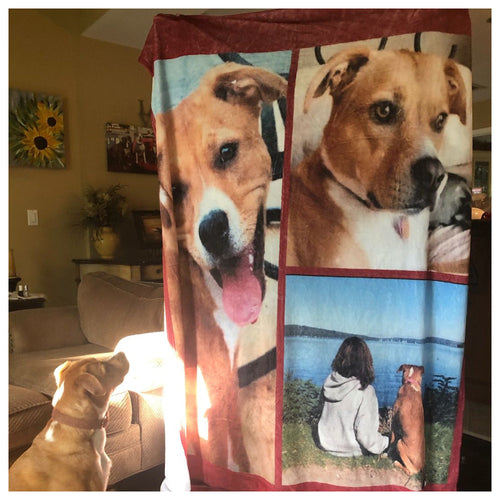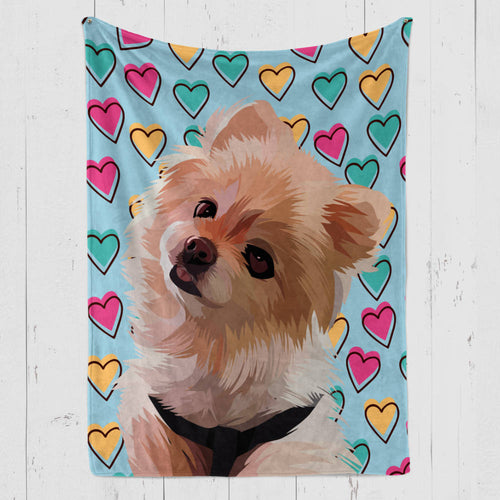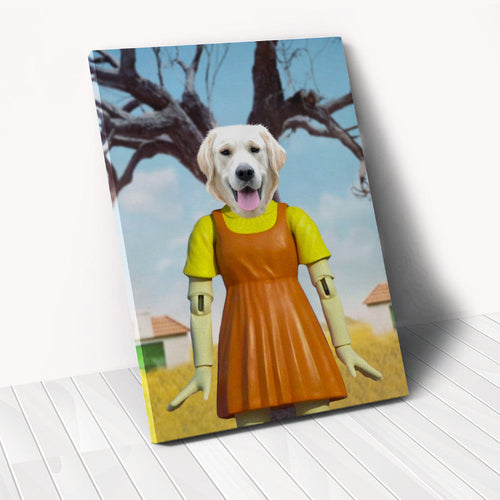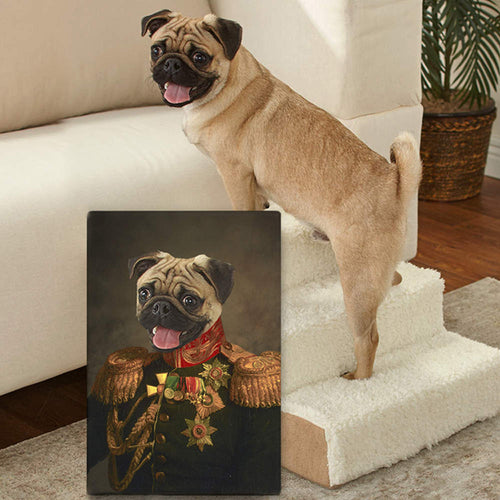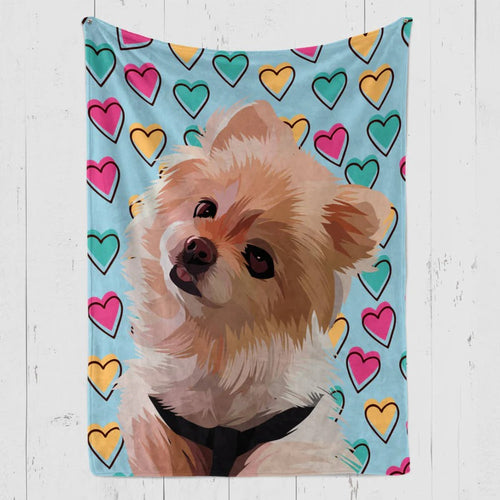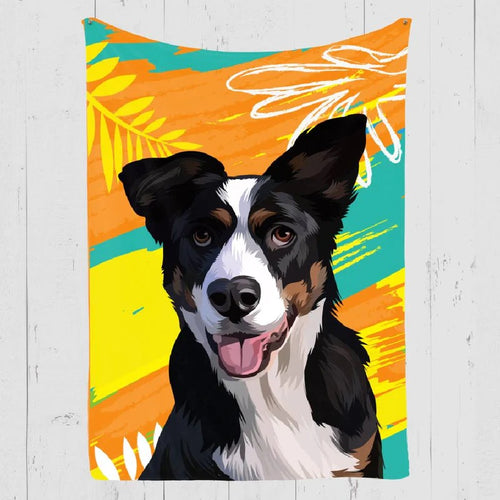
Why Are Some Dogs Aggressive?
Aggression management among dogs can certainly be a puzzling and complex issue that has many pet parents quite clueless and bothered. Those who have pondered the causes behind some puppies displaying aggressive behaviors can certainly take comfort that they are far from alone in such questioning.
Here, we will talk about the world of canine manners, exploring the various factors that contribute to harsh behaviors and shedding light on the importance of teaching behavior modification. Aggression assessment is the first step towards developing a safer and more peaceful friendship while establishing dog aggression training.

Signs Of Aggressive Behavior
Knowing such warnings for both dogs' well-being and those around them is crucial. Aggression can show in various ways like growling noises, bared teeth, lunging forward, and even bites.
Pay close attention to body language which includes raised fur on their back, a stiff posture where they don't move much, and hard staring eyes. Understanding these signs early is key to quickly solving the issue. In later sections, we'll explore the details of these signals and give ideas for effective dog aggression training.
What Causes Dog Aggression?

Whether understanding the core causes of hostility in canines or fixing behaviors, knowledge is power when ensuring the safety of dogs and people. So many triggers can spark fury in dogs - fear, territory claims, annoyance, medical issues, and even nature and experiences.
By figuring out what exactly sparks the anger, customized guidance addresses that trigger correctly. This blog breaks down each cause, sharing tips on how to spot and calm issues to ensure aggressive behavior correction. So what exactly sparks a dog's anger? Read on to better understand man's best friend and build harmony.
Types of Aggression

Anger or aggression in dogs isn't a one-dimension-fits-all conduct; it shows up in shifting structures, all with their own exceptional triggers and traits. Grasping these contrasting types of fierceness is fundamental for positive reinforcement methods.
- Dogs’ aggression triggers if someone comes to their place or where they are supposed to be. They'd bark loudly and jump at people they don't know who are there. It is called territorial aggression.
- When a puppy gets scared or worried, it might act to protect itself. You can see it growling, backing up fast, or even biting if it feels in danger. It is called fear aggression.
- Some dogs try to be in charge over other dogs or humans, usually when there's food or attention. It is called dominance aggression.
- If a dog can't get to who it wants, it may take it out on a person or pet nearby instead. It is called redirected aggression.
- Dogs can act mad during times with lots of dogs, especially if there's not much space. It is called social aggression.
- Discomfort or pain can lead to aggression as a means to protect themselves from further discomfort. It is called pain-induced aggression.
Being hurt or sore might lead a puppy to act aggressively so it doesn't feel bad anymore. Understanding why dogs do this stuff is the first step to fixing it right by lessons and changing how they act, which is a part of training a dog’s aggression management.
Things to Do With an Aggressive Dog:

Taking control of an angry dog demands patience, focus, and a well-thought-out method. These initial steps are to be followed:
- Seek advice from a professional dog trainer or vet behaviorist to evaluate how bad the aggression is and develop a custom plan.
- Make certain safety rules for yourself, your pup, and others first. Employ a muzzle or a strong leash and collar to keep anybody from getting hurt in the lessons.
- Comprehend their aggression triggers and work on desensitizing them to these triggers gradually.
- Use positive reinforcement methods, rewarding good behavior to encourage your dog to make positive associations.
- Maintain a consistent training routine to reinforce desired behaviors and avoid confusing your dog.
- Punishment can escalate aggression. Focus on redirection and positive alternatives instead.
- Gradual exposure to other dogs and people in controlled settings can help reduce fear aggression.
- In some cases, aggression medication prescribed by a veterinarian can aid in behavior modification.
Remember, working with an aggressive dog is a journey that requires time and effort. Stay committed, stay patient, and always prioritize your dog's well-being.
Things Not to Do With an Aggressive Dog:
When dealing with an aggressive dog, certain actions and approaches should be avoided to prevent exacerbating the problem and ensure everyone's safety:
- Avoid harsh punishments or physical corrections, as they can escalate aggression and erode trust.
- Don't confront the dog directly or engage in aggressive behaviors yourself. This can provoke further aggression.
- Never allow the dog to roam off-leash in public areas until you're confident in their behavior.
- Ignoring aggressive behavior won't make it disappear. Address it with appropriate training and intervention.
- Avoid exposing the dog to unfamiliar situations or people without proper training for aggressive dog socialization.
- Don't overwhelm the dog with too many new stimuli or experiences at once; gradual exposure is key.
Avoiding these counterproductive actions is crucial for successful behavior modification and a harmonious relationship with your dog.
Aggressive Dog Training Tips
Training an aggressive dog necessitates specialized techniques and a patient, consistent approach. Here are some valuable tips for effective aggressive dog training:
- Consult with a professional dog trainer experienced in aggression cases.
- Point out the aggression triggers which will allow you to work on desensitization and counterconditioning strategies.
- Using encouragement works well to make dogs not behave in an aggressive way. Giving treats or pats when they act friendly will help them understand being nice leads to good stuff.
- Be clear with your commands so the dog does not get mixed up.
- Have the dog wear a leash they can't break free from, a muzzle, or other gear to keep everyone protected as they learn.
- It's better not to punish being aggressive but to help change what triggers it.
- The results may be gradual, and sometimes they'll slip back into old ways, so you must stick with training.
- Keep encouraging good manners consistently - it really is the key to more self-control when upset or aggressive.
- For some dogs that are too hard to handle, vet-approved aggression medication alongside behavior changes can support each other.
Working with an aggressive dog takes dedication and expertise. Safety and the dog's well-being should always be top priorities throughout the training process.
Tools To Help With Dog Aggression

When addressing dog aggression, having the right tools at your disposal can make a significant difference in the training process. Here are some useful tools to help with aggression management:
- A well-fitted muzzle provides safety during training and prevents bites without causing discomfort.
- Choose sturdy, escape-proof leashes and collars to maintain control over your dog.
- Training whistles can help reinforce positive behaviors with precision timing.
- Appreciations such as treats, serve as powerful motivators for positive behavior reinforcement.
- You can use interactive toys as well. These can redirect your dog's energy and aggression into more constructive activities.
- A front-clip harness can provide better control during walks, discouraging pulling and aggressive lunging.
- You can also use Thundershirt. This snug-fitting garment can help calm anxious or fearful dogs, reducing aggressive responses.
- Use baby gates or exercise pens to create safe, controlled training environments.
- Consult with a professional dog trainer about calming supplements that may help reduce anxiety and aggression.
- Consider the expertise of a certified dog trainer or behaviorist, who can provide insights, techniques, and tools tailored to your dog's specific aggression triggers.
These tools, used in conjunction with a well-structured training plan, can aid in managing and modifying dog aggression effectively while prioritizing safety and the dog's well-being.
Takeaway
Aggressive dog behavior can be complicated, but it's not impossible to address. Seek professional guidance for a tailored training for aggressive dogs. Avoid harsh punishment and prioritize positive reinforcement. Safety measures like muzzles and secure leashes are crucial. Progress may vary, but with patience, consistency, and expert help, many dogs can become less aggressive and more well-behaved.
Frequently Asked Questions:
What should a regular dog owner Do If they see any uncommon Dog Aggression?
If your dog displays aggressive behavior, prioritize safety for all involved. First, consult a professional dog trainer or a veterinary behaviorist for guidance. Ensure your dog is securely restrained with a muzzle or leash, and avoid punishment. Identify triggers and work on desensitization. Positive reinforcement methods can help behavior modification, but it's crucial to seek expert advice for a tailored plan.
Is it possible to cure an aggressive dog?
Can delay cause less positive outcomes when training an aggressive dog?
How should I be disciplining my aggressive dog?
Can I train my aggressive dog to make it less aggressive?
Is it okay if I train my aggressive dog by myself?
Should I punish a dog to stop its aggressive behavior?
What is a way to make my aggressive dog socialize in a safe way?
What are desensitization techniques and counterconditioning strategies in dog training?
Are there any particular aggressive dog breeds?
How long will it take to train my aggressive dog?
How does the medication help with aggression in dogs?
Latest Review on Woof Blankets
To have such a masterpiece by my side every day is a gift for me and my memories with Rex. Thank you WoofBlankets for such an opportunity to recreate his image on a blanket.Lara o’ Miguel US, California

COLLECTION WORTH EVERY PENNY
BEST SELLERS
-
Woofy Single Color Custom Pet Blanket
![Woofy Single Custom Pet Blanket – Woof Blanket]()
- -41%
BlanketsSHOP NOW- Regular price
- from $64.95
- Sale price
- from $64.95
- Regular price
-
$109.95 - Unit price
- per
Sold out -
Exclusive Christmas Custom Pet Blanket
![Exclusive Custom Pet Blanket]()
- -39%
BlanketsSHOP NOW- Regular price
- from $69.95
- Sale price
- from $69.95
- Regular price
-
$114.95 - Unit price
- per
Sold out -
Christmas Custom Pet Blanket
![Christmas Custom Pet Blanket - Custom Dog Blankets]()
- -40%
BlanketsSHOP NOW- Regular price
- from $69.95
- Sale price
- from $69.95
- Regular price
-
$115.95 - Unit price
- per
Sold out -
Watercolor Pet Portraits
![]() SHOP NOW
SHOP NOW- Regular price
- from $59.95
- Sale price
- from $59.95
- Regular price
-
- Unit price
- per
Sold out -
Woofy Christmas Custom Dog Blanket
![Woofy Christmas Custom Dog Blanket]()
- -39%
BlanketsSHOP NOW- Regular price
- from $69.95
- Sale price
- from $69.95
- Regular price
-
$114.95 - Unit price
- per
Sold out -
Modern Pet Owner Portrait
![]()
- -32%
CanvasSHOP NOW- Regular price
- from $84.95
- Sale price
- from $84.95
- Regular price
-
$124.95 - Unit price
- per
Sold out -
Woof Splash Custom Pet Blanket
![Woof Splash Custom Pet Blanket]()
- -39%
BlanketsSHOP NOW- Regular price
- from $69.95
- Sale price
- from $69.95
- Regular price
-
$114.95 - Unit price
- per
Sold out -
The Admiral - Custom Pet Portrait
![The Admiral - Custom Pet Portrait Online]()
- NEW
- -25%
CanvasSHOP NOW- Regular price
- from $59.95
- Sale price
- from $59.95
- Regular price
-
$79.95 - Unit price
- per
Sold out -
Wings of Loyalty - Custom Pet Portrait
![]()
- NEW
CanvasSHOP NOW- Regular price
- from $59.95
- Sale price
- from $59.95
- Regular price
-
- Unit price
- per
Sold out -
Pet Memorial Custom Photo Collage Blanket
![Personalized pet memorial quilt with photos]()
- -41%
BlanketsSHOP NOW- Regular price
- from $64.95
- Sale price
- from $64.95
- Regular price
-
$109.95 - Unit price
- per
Sold out -
Celestial Paws - Custom Pet Portrait
![]() CanvasSHOP NOW
CanvasSHOP NOW- Regular price
- from $59.95
- Sale price
- from $59.95
- Regular price
-
- Unit price
- per
Sold out -
The Loyal Soul - Custom Pet Portrait
![]()
- NEW
SHOP NOW- Regular price
- from $59.95
- Sale price
- from $59.95
- Regular price
-
- Unit price
- per
Sold out -
Cartoonized Pet Portraits (New)
![Cartoonized Pet Custom Portraits Online]()
- -36%
SHOP NOW- Regular price
- from $59.95
- Sale price
- from $59.95
- Regular price
-
$93.95 - Unit price
- per
Sold out -
The French Sailor - Custom Pet Portrait
![]()
- -25%
CanvasSHOP NOW- Regular price
- from $59.95
- Sale price
- from $59.95
- Regular price
-
$79.95 - Unit price
- per
Sold out -
The Policeman - Custom Pet Portrait
![]()
- NEW
- -25%
CanvasSHOP NOW- Regular price
- from $59.95
- Sale price
- from $59.95
- Regular price
-
$79.95 - Unit price
- per
Sold out -
The General - Custom Pet Portrait
![]()
- NEW
- -25%
CanvasSHOP NOW- Regular price
- from $59.95
- Sale price
- from $59.95
- Regular price
-
$79.95 - Unit price
- per
Sold out -
Woof Love Custom Pet Blanket
![Woof Love Custom Pet Blanket]()
- -39%
BlanketsSHOP NOW- Regular price
- from $69.95
- Sale price
- from $69.95
- Regular price
-
$114.95 - Unit price
- per
Sold out -
Summer Time Custom Pet Blanket
![Summer Time Custom Pet Blanket]()
- -39%
BlanketsSHOP NOW- Regular price
- from $69.95
- Sale price
- from $69.95
- Regular price
-
$114.95 - Unit price
- per
Sold out -
The Ambassador - Custom Pet Portrait
![The Ambassador - Custom Pet Portrait Online]()
- NEW
- -25%
CanvasSHOP NOW- Regular price
- from $59.95
- Sale price
- from $59.95
- Regular price
-
$79.95 - Unit price
- per
Sold out -
Fall In Love Custom Pet Blanket
![Fall In Love Custom Dog Blanket]()
- NEW
- -39%
BlanketsSHOP NOW- Regular price
- from $69.95
- Sale price
- from $69.95
- Regular price
-
$114.95 - Unit price
- per
Sold out -
The Classy Lady - Custom Pet Portrait
![The Classy Lady]()
- NEW
- -25%
CanvasSHOP NOW- Regular price
- from $59.95
- Sale price
- from $59.95
- Regular price
-
$79.95 - Unit price
- per
Sold out -
The Duke - Custom Pet Portrait
![The Duke - Custom Pet Portrait]()
- NEW
- -25%
CanvasSHOP NOW- Regular price
- from $59.95
- Sale price
- from $59.95
- Regular price
-
$79.95 - Unit price
- per
Sold out -
Dog In Suit- Custom Pet Portrait
![Dash Dog In Suit- Custom Pet Portrait Online]()
- NEW
- -25%
CanvasSHOP NOW- Regular price
- from $59.95
- Sale price
- from $59.95
- Regular price
-
$79.95 - Unit price
- per
Sold out -
The Princess - Custom Pet Portrait
![]()
- NEW
- -25%
CanvasSHOP NOW- Regular price
- from $59.95
- Sale price
- from $59.95
- Regular price
-
$79.95 - Unit price
- per
Sold out -
Modern Pet Portrait with One Mug
![Modern Pet Portrait with One Mug]()
- -25%
Print MaterialSHOP NOW- Regular price
- from $99.95
- Sale price
- from $99.95
- Regular price
-
$133.95 - Unit price
- per
Sold out -
The Aristocrat - Custom Pet Portrait
![The Aristocrat - Custom Pet Portrait At Best Price]()
- NEW
- -25%
CanvasSHOP NOW- Regular price
- from $59.95
- Sale price
- from $59.95
- Regular price
-
$79.95 - Unit price
- per
Sold out -
Single Color Custom Blanket with 1 Mug
![Single Color Custom Blanket with 1 Mug]() BlanketsSHOP NOW
BlanketsSHOP NOW- Regular price
- from $99.95
- Sale price
- from $99.95
- Regular price
-
- Unit price
- per
Sold out -
Single Color Custom Blanket with 2 Pillows
![Single Color Custom Pet Blanket with 2 Pillows]()
- -21%
BlanketsSHOP NOW- Regular price
- from $99.95
- Sale price
- from $99.95
- Regular price
-
$125.95 - Unit price
- per
Sold out -
The Dog in Suit Custom Pet Mug
![]()
- -20%
MugsSHOP NOW- Regular price
- $39.95
- Sale price
- $39.95
- Regular price
-
$49.95 - Unit price
- per
Sold out -
Angel Custom Pet Mug
![]()
- -20%
MugsSHOP NOW- Regular price
- $39.95
- Sale price
- $39.95
- Regular price
-
$49.95 - Unit price
- per
Sold out -
This Human Belongs To - Custom Pet Mug
![]()
- NEW
- -20%
MugsSHOP NOW- Regular price
- $39.95
- Sale price
- $39.95
- Regular price
-
$49.95 - Unit price
- per
Sold out -
It's Not Dog Hair Custom Pet Mug
![]()
- NEW
- -20%
MugsSHOP NOW- Regular price
- $39.95
- Sale price
- $39.95
- Regular price
-
$49.95 - Unit price
- per
Sold out -
My Dog Is My Valentine Custom Pet Mug
![]()
- NEW
- -20%
MugsSHOP NOW- Regular price
- $39.95
- Sale price
- $39.95
- Regular price
-
$49.95 - Unit price
- per
Sold out -
3 Photos With Message Custom Pet Mug
![]()
- NEW
- -20%
MugsSHOP NOW- Regular price
- $39.95
- Sale price
- $39.95
- Regular price
-
$49.95 - Unit price
- per
Sold out -
My Valentine Has Four Legs- Personalized Mugs
![]()
- NEW
- -20%
MugsSHOP NOW- Regular price
- $39.95
- Sale price
- $39.95
- Regular price
-
$49.95 - Unit price
- per
Sold out -
Dog Mamma Custom Pet Coffee Mug
![]()
- -20%
MugsSHOP NOW- Regular price
- $39.95
- Sale price
- $39.95
- Regular price
-
$49.95 - Unit price
- per
Sold out -
Uncle Sam - Custom Pet Portrait
![]()
- NEW
- -25%
CanvasSHOP NOW- Regular price
- from $59.95
- Sale price
- from $59.95
- Regular price
-
$79.95 - Unit price
- per
Sold out -
The Revolutionary Emperor - Custom Pet Portrait
![]()
- NEW
- -25%
CanvasSHOP NOW- Regular price
- from $59.95
- Sale price
- from $59.95
- Regular price
-
$79.95 - Unit price
- per
Sold out -
The Princess Paws - Custom Pet Portrait
![]()
- -25%
CanvasSHOP NOW- Regular price
- from $59.95
- Sale price
- from $59.95
- Regular price
-
$79.95 - Unit price
- per
Sold out -
The Dark Crusader Knight - Custom Pet Portrait
![]()
- -25%
CanvasSHOP NOW- Regular price
- from $59.95
- Sale price
- from $59.95
- Regular price
-
$79.95 - Unit price
- per
Sold out


